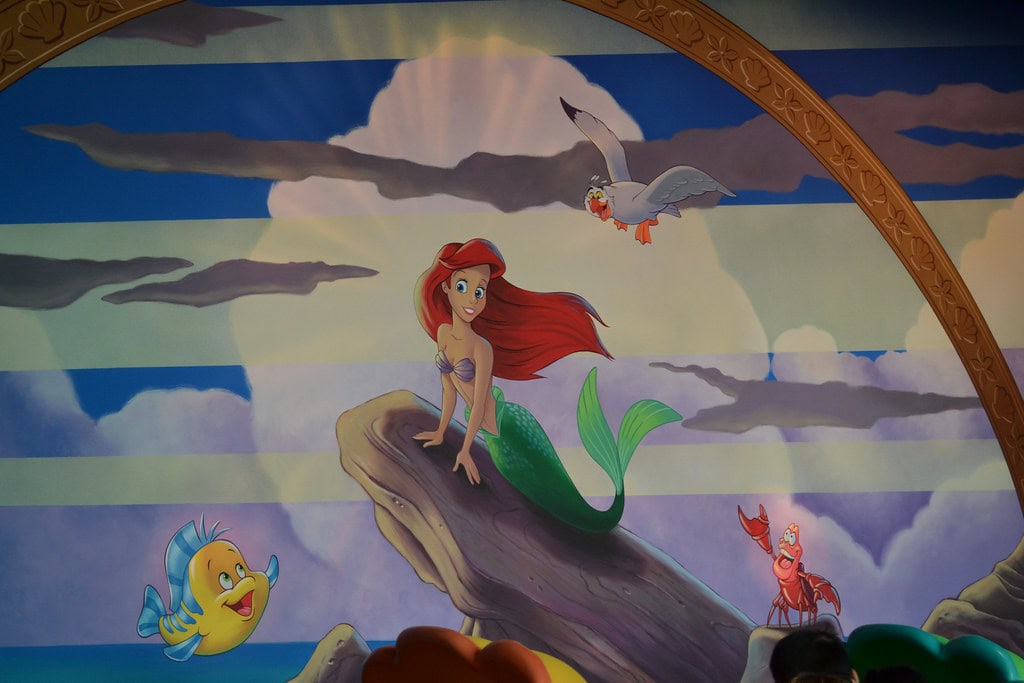Disney movies have enchanted audiences for generations, not just with their human characters but with the lovable animal sidekicks that often steal the show. These animated companions have become iconic parts of Disney’s legacy, but many viewers may not realize that these characters are based on real animal species with fascinating characteristics and behaviors. From the tropical oceans to dense rainforests, Disney’s creative teams have drawn inspiration from the natural world to create memorable characters that complement their human counterparts. This article explores the real-life animals behind some of Disney’s most beloved animal sidekicks, examining how their natural traits influenced their animated personas and how accurately they’re portrayed on screen.
Flounder from “The Little Mermaid” – The

Despite his name suggesting he’s a flounder fish, Ariel’s best friend in “The Little Mermaid” is actually designed to resemble a royal blue tang (Paracanthurus hepatus), also known as the palette surgeonfish or blue hippo tang. These vibrant reef-dwelling fish are instantly recognizable by their electric blue bodies and distinctive black markings, though Disney took creative license by giving Flounder a yellow and blue color scheme rather than the tang’s solid blue appearance. The character’s cheerful personality captures the energetic swimming behavior of real blue tangs, which are active during daylight hours as they forage for algae across coral reefs.
In their natural habitat, royal blue tangs are found throughout the Indo-Pacific region, including the Great Barrier Reef and coral reefs near Indonesia, Japan, and East Africa. Unlike Flounder’s portrayed timidity, real blue tangs are relatively bold fish that travel in schools for protection. The species gained additional popularity following the release of “Finding Nemo” and “Finding Dory,” where the character Dory represents the same species. Conservation concerns have grown for blue tangs as they’re frequently captured for the aquarium trade, making Flounder an unintentional ambassador for a species now facing environmental pressures.
Sebastian from “The Little Mermaid” – The Caribbean Red Crab

Sebastian, the musically gifted crustacean from “The Little Mermaid,” appears to be inspired by the Caribbean red crab (Gecarcinus ruricola), also known as the red land crab. These striking crustaceans share Sebastian’s vibrant red coloration and are native to the Caribbean islands, making them a geographically appropriate choice for the film’s tropical setting. Unlike Sebastian, who lives underwater as King Triton’s royal court composer, real Caribbean red crabs are primarily terrestrial, living in forests, shrublands, and coastal areas, only returning to the ocean to release their eggs.
Caribbean red crabs undergo remarkable annual migrations to the shoreline during breeding season, moving in large numbers that can be reminiscent of Sebastian’s orchestrated musical performances with sea creatures. Their ability to live both on land and briefly underwater mirrors Sebastian’s mobility between underwater Atlantica and the surface world. The species has powerful claws similar to those Sebastian uses to conduct his orchestra and express his emotions. While Disney anthropomorphized Sebastian considerably, they captured the distinctive appearance and tenacious character of these remarkable crustaceans that play vital roles in their ecosystems by aerating soil and cycling nutrients.
Pascal from “Tangled” – The Common Chameleon

Pascal, Rapunzel’s loyal companion in “Tangled,” is based on the common chameleon (Chamaeleo chamaeleon), though with some creative modifications. His most notable authentic trait is his color-changing ability, which real chameleons use for communication, temperature regulation, and camouflage rather than just blending in with surroundings as commonly believed. In the film, Pascal’s emotions drive his color changes, which is a charming exaggeration of how real chameleons use color to express states like aggression, fear, or mating readiness. The character’s expressive eyes accurately reflect the unique independent eye movement of chameleons, which can rotate their eyes in different directions simultaneously to scan for prey and predators.
Pascal’s diminutive size and ability to cling to surfaces mirror the common chameleon’s adapted lifestyle. These reptiles have specialized feet with opposing digits that form grasping pincers, allowing them to hold firmly to branches—similar to how Pascal clings to Rapunzel’s shoulder or hair. Their remarkably long, sticky tongues that can extend to catch insects are another distinctive feature that Disney references when Pascal uses his tongue in various scenes. Native to Southern Europe, North Africa, and parts of the Middle East, common chameleons inhabit Mediterranean forests and scrublands, quite different from Pascal’s tower home, but the species’ distinctive traits made it the perfect inspiration for a character who needed to be small, expressive, and capable of providing silent commentary through color and expression.
Mushu from “Mulan” – The Chinese Dragon Lizard

Mushu, the pint-sized guardian dragon in “Mulan,” bears little resemblance to traditional Chinese dragons from mythology, but his design incorporates elements from several real reptiles, particularly the Chinese water dragon (Physignathus cocincinus). These lizards have elongated bodies, distinctive head crests, and vivid coloration that inspired aspects of Mushu’s appearance. While Mushu’s red coloration is more symbolic in Chinese culture (representing good fortune and joy) than biologically accurate, his slender body and expressive face capture some of the lively characteristics of the water dragon, which is native to the forests of China and Southeast Asia.
The Chinese water dragon’s ability to run on its hind legs when threatened may have influenced Mushu’s bipedal movement in the film. These semi-aquatic reptiles are excellent swimmers and climbers, traits reflected in Mushu’s agility throughout the movie. Another possible influence on Mushu’s design is the Chinese crocodile lizard (Shinisaurus crocodilurus), an endangered species native to southern China with distinctive scaled ridges along its back similar to the spines seen on Mushu. Though highly stylized and anthropomorphized, Mushu represents a creative blend of mythological dragons and real reptilian species found in the film’s setting, connecting fantasy elements to the natural world of ancient China.
Zazu from “The Lion King” – The Red-billed Hornbill

Zazu, the uptight royal advisor in “The Lion King,” is clearly modeled after the red-billed hornbill (Tockus erythrorhynchus), a bird species native to the savannas of sub-Saharan Africa where the film is set. The character’s most distinctive feature—his large, bright red bill—is an accurate representation of this hornbill species. These medium-sized birds have black and white plumage that Disney faithfully incorporated into Zazu’s design, though they gave him a more upright, humanoid posture to facilitate his role as the king’s majordomo. In the wild, red-billed hornbills are known for their vocal nature, making them a fitting inspiration for the talkative, report-delivering Zazu.
The real-life behavior of red-billed hornbills offers interesting parallels to Zazu’s character. These birds are highly territorial and form monogamous pairs, reflecting Zazu’s loyalty to the pride lands and its royal family. They’re also known for their sentinel behavior, often perching in elevated positions to watch for predators and warning other animals of danger—mirroring Zazu’s watchful, cautious nature and his role as the eyes and ears of the kingdom. Red-billed hornbills have a unique nesting habit where females seal themselves into tree cavities during incubation, relying on males to deliver food through a narrow slit—a fascinating example of parental dedication that, while not shown in the film, aligns with the character’s sense of duty and service to others.
Timon from “The Lion King” – The Meerkat
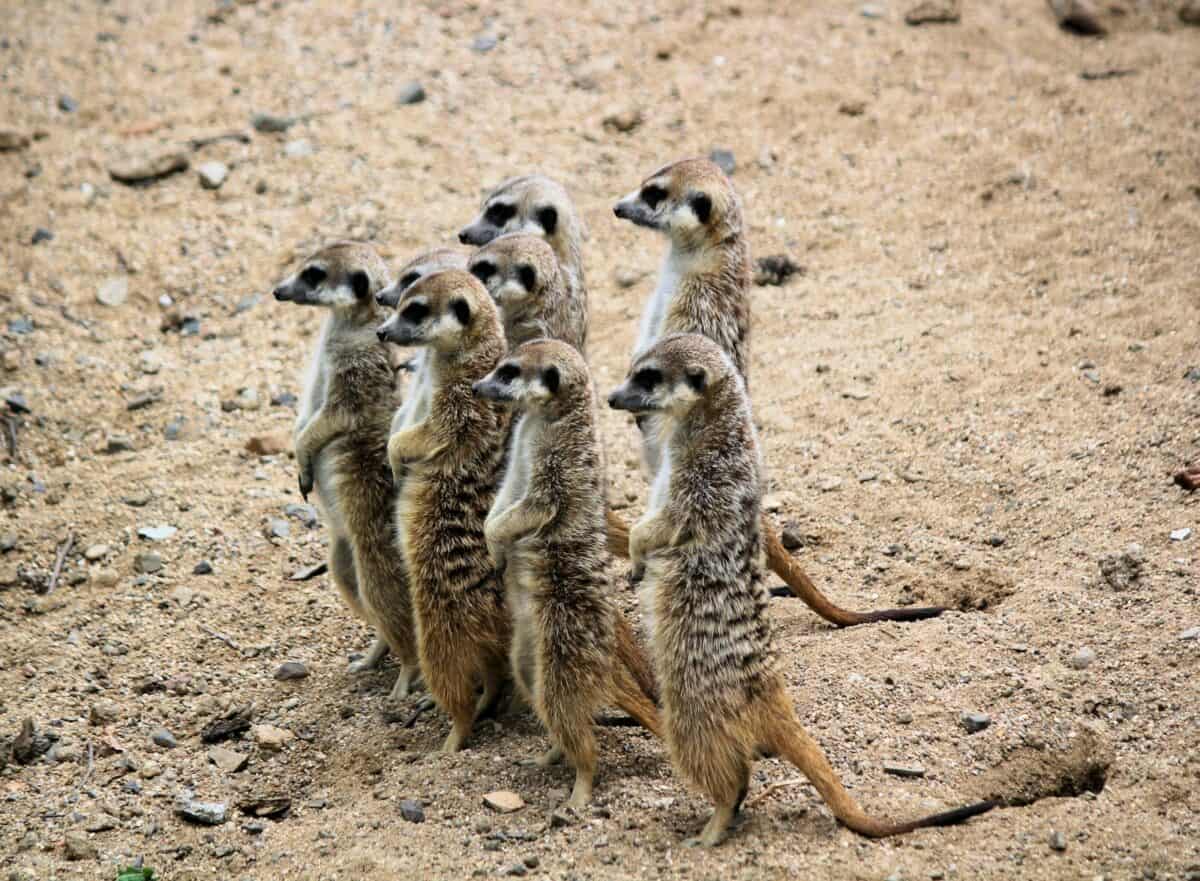
Timon, the carefree philosopher from “The Lion King,” is an animated representation of a meerkat (Suricata suricatta), a small mongoose species native to southern Africa. Disney captured many accurate physical traits of meerkats in Timon’s design, including their slender build, tan fur, dark patches around the eyes, and characteristic upright standing posture that real meerkats use as a lookout position. In their natural habitat, meerkats live in underground burrow systems in groups called mobs or gangs, making Timon’s solitary lifestyle (before meeting Pumbaa) quite unusual for his species, which typically relies on highly social cooperative behavior for survival.
The “hakuna matata” (no worries) philosophy that defines Timon’s character contrasts sharply with the reality of meerkat life, which involves constant vigilance against predators and coordinated sentinel duty among group members. Real meerkats take turns standing guard while others forage for food, with sentinels giving specific alarm calls for different threats. Their diet primarily consists of insects, spiders, small reptiles, and other invertebrates—making Timon’s appetite for grubs somewhat accurate, though simplified. Meerkats are also known for their complex social structure with dominant breeding pairs, helping behaviors among related individuals, and teaching behaviors where adults show young how to safely handle dangerous prey like scorpions—sophisticated behaviors that were understandably simplified for Timon’s characterization as the laid-back comic relief.
Pumbaa from “The Lion King” – The Common Warthog
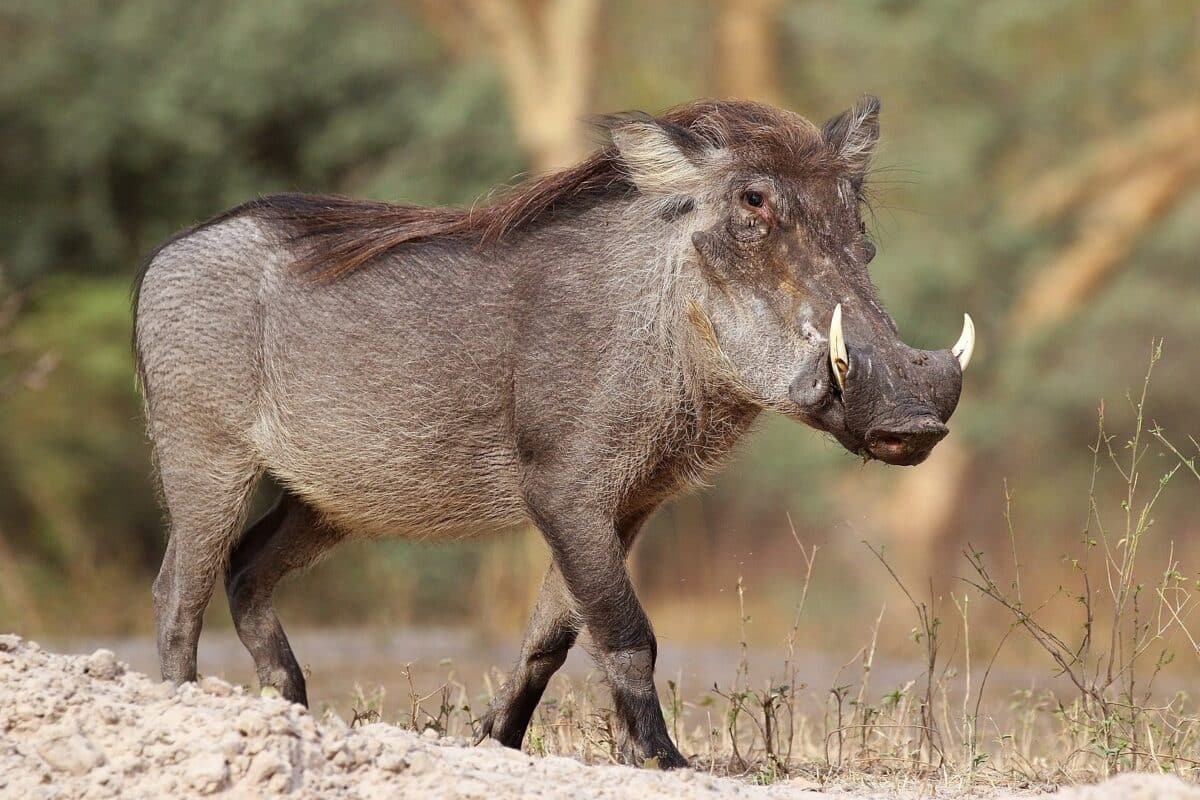
Pumbaa, Timon’s loyal friend in “The Lion King,” is based on the common warthog (Phacochoerus africanus), a wild member of the pig family native to the grasslands, savannas, and woodlands of sub-Saharan Africa. Disney’s animators faithfully captured several distinctive features of warthogs in Pumbaa’s design, including the curved tusks, facial warts (which are actually protective pads), and the bristly mane that runs along his back. His stout body and short legs accurately represent the warthog’s build, though his coloration is somewhat brighter and more reddish than the typical grayish-brown of real warthogs.
In nature, warthogs are far more formidable than Pumbaa’s gentle personality suggests. They can be aggressive when threatened and use their sharp tusks for defense against predators like lions and leopards. The film’s portrayal of Pumbaa’s diet as consisting primarily of insects, particularly grubs, is a creative liberty; real warthogs are omnivores that primarily graze on grasses, roots, berries, and bark, though they do occasionally eat insects and even small vertebrates. One accurate behavioral trait the film captures is the warthog’s habit of entering burrows backward with tusks facing outward as a defensive posture—referenced when Pumbaa backs into tight spaces. The character’s infamous flatulence problem, while exaggerated for comedy, does have some basis in reality as warthogs, like many ungulates, produce significant digestive gases due to their plant-heavy diet.
Abu from “Aladdin” – The Capuchin Monkey
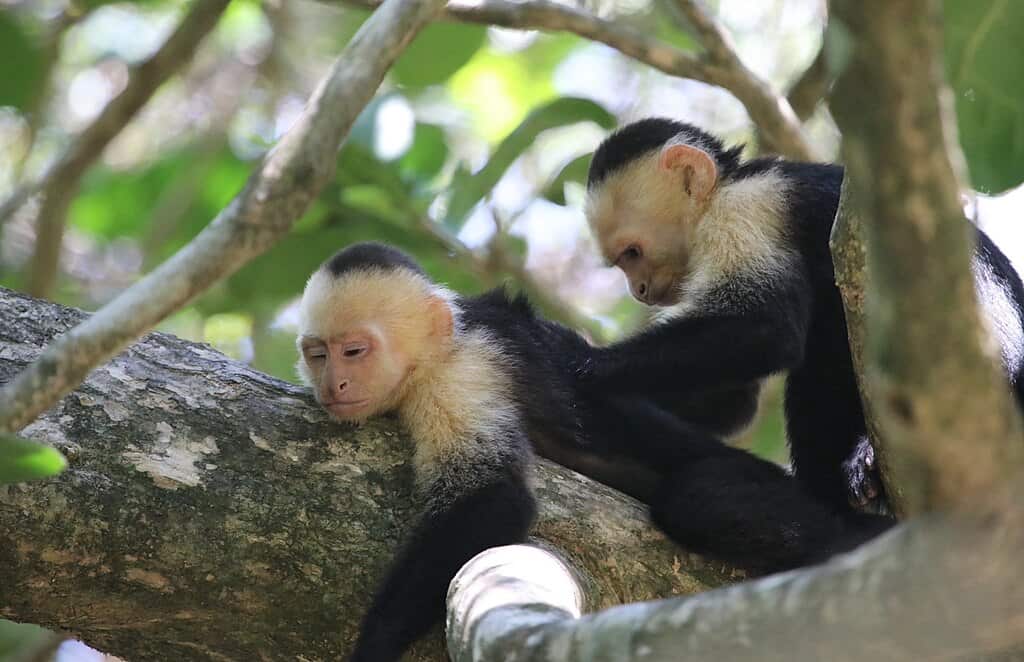
Abu, Aladdin’s mischievous primate partner in crime from “Aladdin,” is primarily inspired by the capuchin monkey (Cebus spp.), particularly the tufted capuchin. These small, intelligent New World monkeys are native to the tropical forests of Central and South America, not the Middle East where Aladdin is set, representing one of Disney’s geographical creative liberties. Capuchins are recognizable by their distinctive coloration with dark bodies and lighter faces and shoulders—a pattern reflected in Abu’s design with his cream-colored face and darker body. The character’s small size, dexterous hands, and expressive face accurately capture the physical traits that make capuchins among the most recognizable monkey species.
The portrayal of Abu’s intelligence and manual dexterity is grounded in scientific reality. Capuchin monkeys are considered among the most intelligent of the New World monkeys, demonstrating tool use in the wild and problem-solving abilities. Their highly dexterous hands allow them to manipulate objects with precision—reflected in Abu’s pickpocketing skills and ability to handle items like lockpicks and jewelry. The character’s emotional expressiveness also mirrors real capuchins, which have a wide range of facial expressions and vocalizations used for communication. In captivity, capuchins have been trained as service animals and performers due to their intelligence and adaptability, perhaps influencing the decision to cast this species as Aladdin’s clever accomplice, though the film’s portrayal of monkey ownership as casual and simple overlooks the complex needs and challenging behaviors of these wild animals.
Meeko from “Pocahontas” – The North American Raccoon

Meeko, the food-obsessed companion in “Pocahontas,” is an accurate representation of the North American raccoon (Procyon lotor), a native species that would indeed have been present in the Virginia setting of the film during the early 17th century. Disney captured the raccoon’s most distinctive physical features in Meeko’s design, including the black facial mask, ringed tail, and salt-and-pepper gray fur. His hand-like paws with dexterous digits are anatomically correct, as raccoons possess remarkable manual dexterity that allows them to manipulate objects, open containers, and even untie knots—skills that Meeko demonstrates throughout the film when pilfering food and other items.
Meeko’s persistent food-seeking behavior and opportunistic nature accurately reflect real raccoon behavior. These highly adaptable omnivores are known for their intelligence and problem-solving abilities, particularly when it comes to accessing food sources. Their natural curiosity and lack of fear around human settlements has made them successful urban adapters in modern times, but they would have been equally resourceful in the historical setting of the film. Raccoons in the wild have excellent memory for complex tasks, especially related to food acquisition, and can remember solutions to problems for up to three years—an attribute reflected in Meeko’s clever approaches to stealing John Smith’s compass and Ratcliffe’s food. While Disney anthropomorphized Meeko considerably, his core traits of resourcefulness, mischief, and food motivation are authentic representations of this highly intelligent North American mammal.
Rajah from “Aladdin” – The Bengal Tiger

Rajah, Princess Jasmine’s protective tiger companion in “Aladdin,” is based on the Bengal tiger (Panthera tigris tigris), a subspecies native to the Indian subcontinent. While the film is set in the fictional Arabian city of Agrabah, the presence of a Bengal tiger is not entirely far-fetched, as tigers historically ranged into parts of the Middle East, including modern-day Iran and the Caspian region. Disney’s animators accurately captured the distinctive orange coat with black stripes, white belly and facial markings, and powerful build that characterize Bengal tigers. Rajah’s imposing size relative to human characters reflects the reality that Bengal tigers are among the largest cat species, with males weighing up to 550 pounds (250 kg).
The portrayal of Rajah as protective and loyal to Jasmine takes significant creative license with tiger behavior, as these solitary wild cats do not naturally bond with humans in the way depicted. However, there is historical precedent for tigers being kept as royal pets in ancient India and Persia, where they symbolized power and were sometimes presented as exotic gifts to rulers. The character’s behaviors of growling at unwanted suitors and guarding the princess combine feline territorial instincts with anthropomorphized protective qualities. While Rajah’s temperament is gentler than a real tiger’s would be, his intimidating roars and occasional aggression toward strangers like Aladdin hint at the true nature of these apex predators. Bengal tigers today are endangered, with fewer than 4,000 remaining in the wild, making Rajah an unintentional ambassador for tiger conservation.
Thumper from “Bambi” – The Eastern Cottontail Rabbit
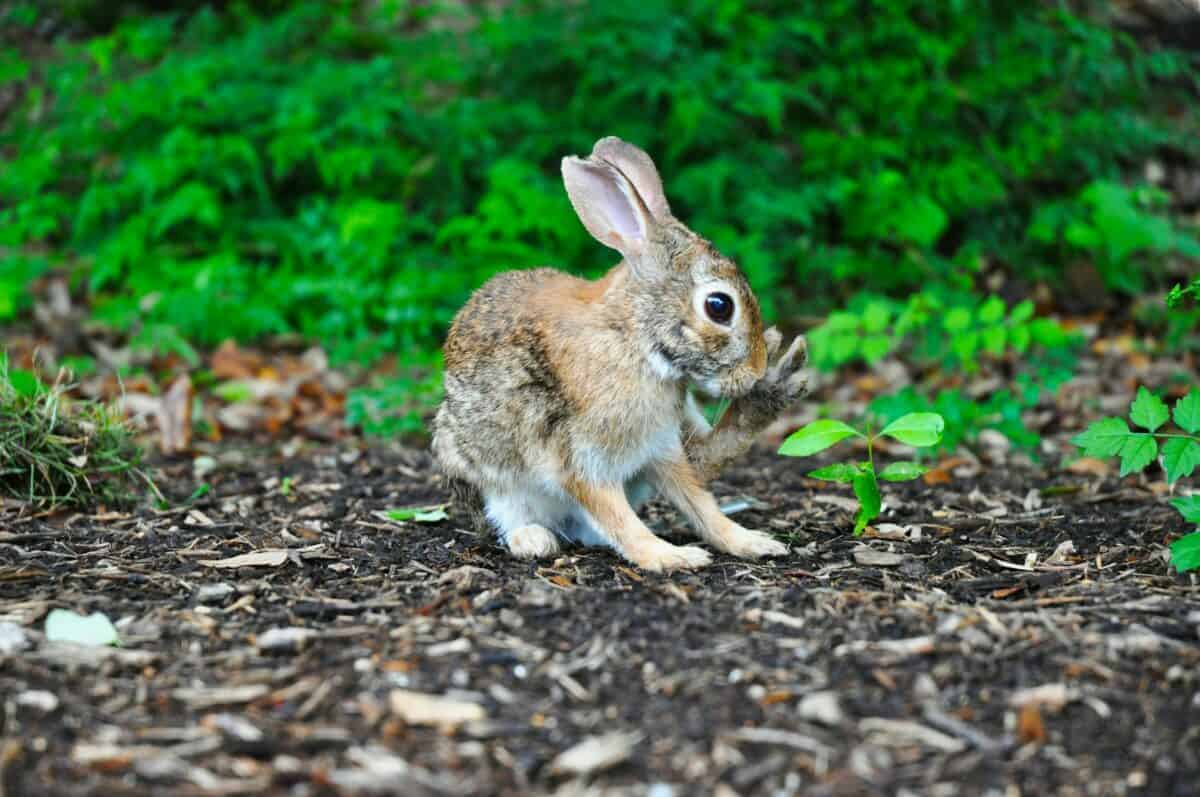
Thumper, the talkative rabbit friend in “Bambi,” appears to be based primarily on the Eastern cottontail rabbit (Sylvilagus floridanus), a common species native to North America, including the forest settings depicted in the film. Released in 1942, “Bambi” features some of Disney’s most realistic animal depictions, and Thumper’s design captures many accurate anatomical features of cottontail rabbits, including the distinctive white tail, long ears, and powerful hind legs. His gray-brown coloration reflects the natural camouflage of wild cottontails, though his face is somewhat more expressive than his real-life counterparts to facilitate emotion and personality for storytelling purposes.
In the wild, Eastern cottontails are solitary and shy, quite unlike Thumper’s bold and playful demeanor. However, his energetic hopping and constant nibbling on vegetation mirror real rabbit behavior, adding a layer of authenticity to his character. Through Thumper, Disney not only created an endearing companion for Bambi but also introduced audiences to the charm and traits of one of North America’s most familiar small mammals.
Conclusion: Sidekicks with their Real Counterparts

Disney’s beloved animal sidekicks often blur the line between fantasy and reality, but many are grounded in real-world species that bring authenticity to their charm. From Flounder the colorful tropical fish in The Little Mermaid to Rajah the regal Bengal tiger in Aladdin, each character reflects characteristics of their real-life counterparts while adding a layer of magical personality. Thumper in Bambi captures the lively essence of an Eastern cottontail rabbit, while Pascal in Tangled brings the quirky unpredictability of a real chameleon to life. Timon and Pumbaa in The Lion King represent a meerkat and warthog duo with surprising biological accuracy in both behavior and habitat. Mushu in Mulan, though a mythological creature, draws inspiration from traditional depictions of Chinese dragons, which often incorporate traits from real animals like serpents, lizards, and birds.
These animal companions do more than provide comic relief—they help ground fantastical stories in the natural world, subtly educating viewers about real species while deepening emotional connections. By blending biology with imagination, Disney breathes life into its sidekicks in ways that entertain and inspire, proving that even the most whimsical characters often have roots in nature.
- Pterosaurs Had Fur, Not Feathers - August 17, 2025
- 11 Creatures That Are Adapting to Urban Life Faster Than Ever - August 17, 2025
- The Debate Over Global Warming Data: Are Climate Scientists Getting It Wrong? - August 17, 2025

